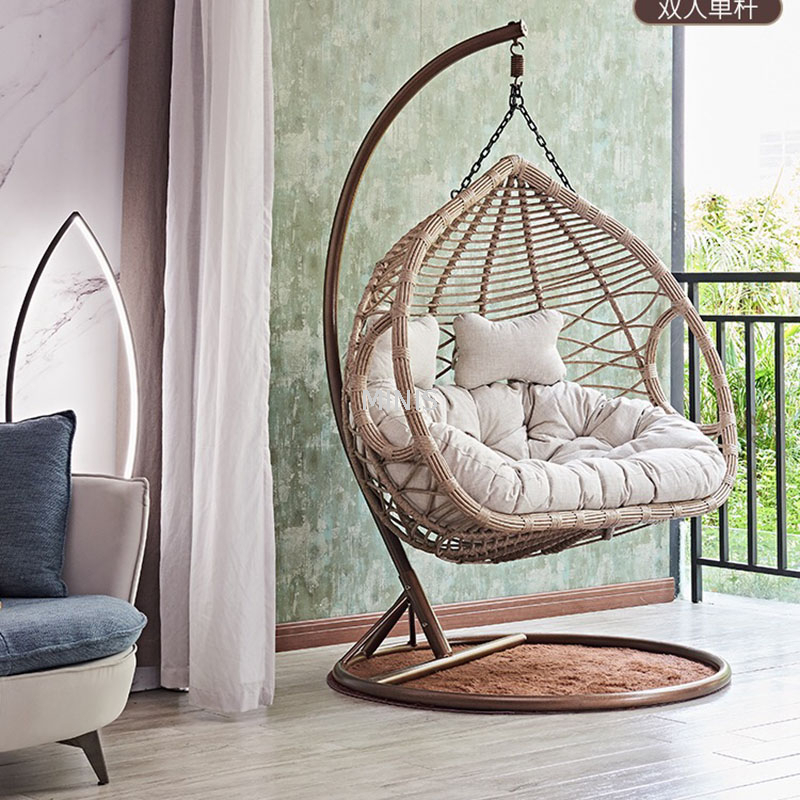Views: 0 Author: Site Editor Publish Time: 2025-09-29 Origin: Site








Outdoor chairs face wear from the elements, often looking faded and dull. But can you paint outdoor plastic chairs? Yes, you can! Painting them revitalizes their appearance, offering a cost-effective alternative to buying new ones. In this post, you'll learn how to transform your plastic chairs with the right preparation, paint selection, and maintenance tips for a lasting finish."
Painting outdoor plastic chairs offers several advantages that can transform your furniture and outdoor space.
A fresh coat of paint can completely change the look of plastic chairs. It allows you to update faded or dull chairs, making them look new and vibrant. You can choose colors that match your outdoor decor or create a bold contrast to add character. For example, painting chairs in bright colors like turquoise or coral can make your patio more inviting and lively. Customizing colors also lets you express your style and creativity, turning ordinary chairs into eye-catching pieces.
Buying new outdoor chairs can be expensive, especially if you want high-quality or designer pieces. Painting your existing plastic chairs is a budget-friendly alternative. A can of spray paint or acrylic paint suitable for plastic typically costs a fraction of what new chairs do. This option saves money while extending the life of your current furniture. Plus, repainting is a quick way to refresh your outdoor seating without the hassle of shopping for replacements.
Painting gives you full control over the design and finish of your chairs. You can pick any color, finish (matte, glossy, or satin), or even add patterns and designs like stripes or stencils. This level of customization is hard to find when buying ready-made chairs. It also lets you coordinate your chairs with other outdoor elements like cushions, umbrellas, or planters. Personalizing chairs makes your outdoor space uniquely yours and can even reflect seasonal themes or holiday colors.
When selecting paint colors for outdoor plastic chairs, consider UV-resistant options to maintain vibrancy and prevent fading over time.

Preparing outdoor plastic chairs properly ensures the paint sticks well and lasts longer. Here’s how to get them ready step-by-step:
Start by washing the chairs to remove dirt, grease, and mildew. Use warm water mixed with mild soap and scrub gently using a sponge or soft brush. This removes any grime that could prevent paint from adhering. Rinse the chairs thoroughly and let them dry completely before moving on. For tougher dirt, a pressure washer can be helpful but use it carefully to avoid damage.
Once dry, lightly sand the plastic surface using fine-grit sandpaper, ideally around 220-grit. This step roughens up the smooth plastic just enough for the paint to grip. Focus on glossy or shiny areas, as they are harder for paint to stick to. Avoid heavy sanding that could damage the chair’s shape or texture. After sanding, wipe the chairs down with a damp cloth to remove all dust particles. Let them dry again before priming.
Priming is crucial for a strong bond between paint and plastic. Use a primer specifically made for plastic surfaces. These primers improve paint adhesion and help prevent peeling or chipping later. Apply the primer evenly, ideally using a spray can for smooth coverage. Hold the can about 6-12 inches away and use light, sweeping motions. Allow the primer to dry fully according to the product instructions before painting.
Always test primer and paint on a small hidden area first to ensure compatibility and desired finish before painting the entire chair.
Selecting the right paint is key to making your outdoor plastic chairs look great and last long. Not every paint sticks well to plastic, so picking the right type ensures your work won’t peel or chip quickly.
● Acrylic PaintAcrylic paint is water-based, flexible, and resists fading. It’s a popular choice because it cleans up easily and works well outdoors. Using outdoor-grade acrylic paint helps it last longer under sun and rain.
● Spray Paint for PlasticSpray paint made specifically for plastic gives an even, smooth coat. It’s quick to apply and reaches tricky spots easily. Many spray paints for plastic don’t need a primer, which makes the process simpler.
● Oil-Based PaintOil-based paints create a hard, durable surface. They stick well but take longer to dry and need solvents for cleanup. Use them if you want a tough finish and don’t mind extra drying time.
● Epoxy PaintEpoxy paint offers a very tough, scratch-resistant finish. It’s great for chairs that get heavy use. However, it usually requires a primer and careful application.
When choosing paint, think about how the chairs will face the elements. UV rays from the sun can fade colors fast. Paint with UV protection keeps colors bright longer. Also, pick paints labeled as weather-resistant to handle rain, wind, and temperature changes. This helps the paint last through seasons without cracking or peeling.
● Rust-OleumKnown for outdoor durability, Rust-Oleum has spray paints made for plastic that resist fading and chipping.
● Krylon Fusion for PlasticThis line bonds well to plastic without primer. It comes in many colors and finishes, making it ideal for outdoor chairs.
● Behr Premium Plus Exterior AcrylicBehr offers acrylic paints that hold up to weather and provide rich color, perfect for plastic furniture.
● Plasti DipPlasti Dip is a rubberized coating that peels off if needed. It’s flexible and protects against scratches, adding a unique finish.
Always check if the paint label says it’s for plastic and outdoor use to ensure the best adhesion and durability for your chairs.
Painting outdoor plastic chairs can be a simple and rewarding project when done right. Follow these clear steps to ensure a smooth, durable finish that will brighten your outdoor space.
Priming is the foundation of a successful paint job on plastic. It helps paint bond firmly to the smooth surface and prevents peeling.
● Choose the Right Primer: Use a primer made specifically for plastic surfaces. These primers improve adhesion and durability.
● Clean Again: Before priming, wipe the chairs to remove dust or debris from sanding.
● Apply Evenly: Spray primer in light, sweeping motions about 6-12 inches from the chair. Avoid heavy coats to prevent drips.
● Dry Time: Let the primer dry fully, usually about 30 minutes to an hour, or follow the product instructions.
● Multiple Coats: If some areas look thin or patchy, apply a second light coat.
Once primed, painting is the fun part! Use the right techniques for a smooth, long-lasting finish.
● Select Suitable Paint: Use spray paint or acrylic paint designed for plastic and outdoor use.
● Prepare Your Workspace: Work outdoors or in a well-ventilated area. Protect nearby surfaces with drop cloths or newspapers.
● Shake the Paint: Shake spray cans vigorously for at least a minute to mix pigments evenly.
● Apply Thin Coats: Hold the spray can 6-12 inches from the chair and spray in light, even strokes. Move steadily to avoid drips or pooling.
● Multiple Layers: Apply 2-3 thin coats rather than one thick coat. Allow each coat to dry fully before adding the next.
● Brush Painting: If using a brush with acrylic paint, use smooth, even strokes. Avoid overloading the brush.
Patience is key. Proper curing ensures the paint hardens fully and withstands outdoor conditions.
● Follow Manufacturer Instructions: Drying and curing times vary by paint type and brand.
● Typical Curing: Most paints need at least 24 hours to cure completely. Some may require up to 48 hours.
● Avoid Use: Don’t use or stack chairs until paint is fully cured to prevent scratches or smudges.
● Optional Sealant: For extra protection, consider applying a clear outdoor sealant after curing.
Always apply paint in thin, multiple coats and allow each to dry fully; this prevents drips and enhances durability on plastic surfaces.
Maintaining painted outdoor plastic chairs helps keep them looking fresh and lasting longer. Regular care prevents the paint from peeling, fading, or chipping, ensuring your chairs stay attractive season after season.
Clean your painted chairs often using mild soap and warm water. Avoid harsh chemicals or abrasive scrubbers, which can damage the paint. Use a soft sponge or cloth to gently wipe down surfaces. Rinse thoroughly to remove soap residue and dirt. Regular cleaning prevents grime buildup, which can degrade the paint over time.
Outdoor conditions like rain, snow, and intense sunlight can wear down paint. To protect your chairs:
● Store them indoors during severe weather or winter months.
● Use outdoor furniture covers to shield from UV rays and moisture.
● Place chairs in shaded areas to reduce sun exposure and prevent color fading.
Taking these steps helps preserve the paint’s vibrancy and adhesion, extending the chair’s lifespan.
Even with care, painted chairs may develop chips or scratches. Inspect them regularly for damage. For small chips:
1. Lightly sand the affected spot to smooth edges.
2. Clean the area to remove dust.
3. Apply touch-up paint designed for plastic surfaces.
4. Allow it to dry fully before use.
For extensive wear, consider repainting the entire chair following the original painting process. This refreshes the look and adds a protective layer.
Keep leftover paint from your original project for quick touch-ups; it ensures color consistency and saves time when repairing small blemishes.

Painting outdoor plastic chairs can be a fun project, but some common mistakes can ruin the finish or shorten its lifespan. Avoid these pitfalls to get the best results.
One of the biggest errors is skipping the primer step. Plastic surfaces are smooth and non-porous, so paint often struggles to stick properly. A primer designed for plastic creates a rougher surface for paint to bond to, reducing peeling and chipping. Without primer, the paint may look patchy and wear off quickly, especially outdoors where weather takes a toll.
Not all paints work well on plastic. Using regular indoor paint or paints not formulated for plastic leads to poor adhesion and fading. It’s crucial to choose paints specifically made for plastic surfaces, like acrylic spray paint or plastic-specific spray paints. These paints are flexible and designed to resist cracking as the plastic expands and contracts with temperature changes.
Painting outdoors requires attention to weather. High humidity, rain, or extreme temperatures can interfere with drying and curing. Painting on a hot, sunny day might cause the paint to dry too fast, leading to cracks or uneven coverage. Conversely, painting in cold or damp conditions can prevent the paint from curing properly, making it prone to peeling. Aim for mild, dry days with temperatures between 50°F and 85°F for the best outcome.
Always check the weather forecast and paint during calm, dry conditions to ensure proper drying and a durable finish on your plastic chairs.
Painting outdoor plastic chairs rejuvenates them, enhancing aesthetic appeal and providing a cost-effective alternative to buying new furniture. The process involves cleaning, sanding, priming, and selecting suitable paint to ensure durability. With the right approach, you can customize your chairs to reflect your style. Foshan Minis Furniture Co., Ltd. offers innovative solutions for outdoor furniture needs, ensuring quality and style. Embrace this DIY project to transform your outdoor space affordably and creatively.
A: Painting outdoor chairs enhances aesthetic appeal, offers cost-effectiveness compared to buying new chairs, and allows customization to match your style and outdoor decor.
A: Clean the chairs thoroughly, sand the surface lightly for better adhesion, and apply a primer suitable for plastic to ensure the paint sticks well and lasts longer.
A: Using paint designed for plastic and outdoor use ensures durability, UV resistance, and weather protection, preventing peeling and fading over time.